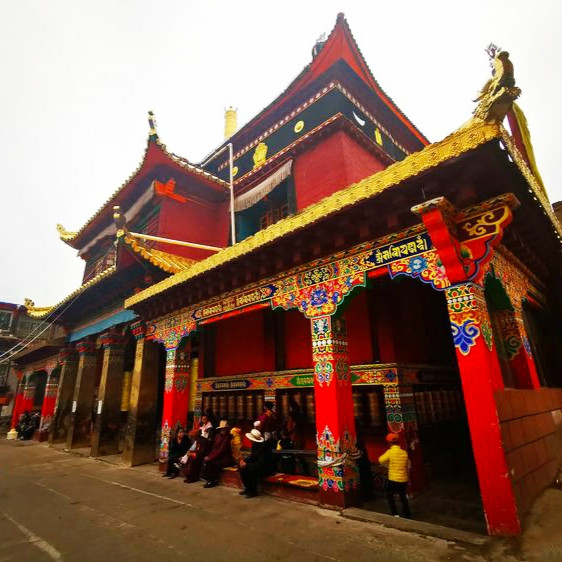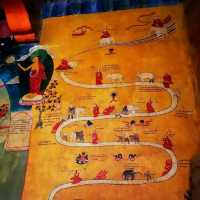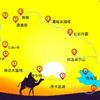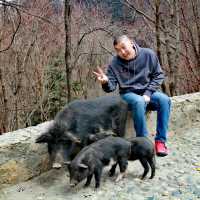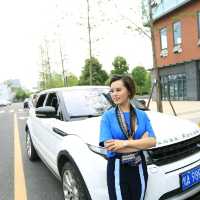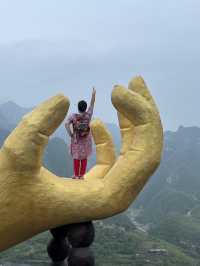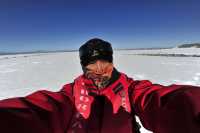Degongbo is located in Kangba Zhehuo area, now belongs to Deba Village, Ganzi Town, which is a major transportation route to the mainland and all over Tibet. It is in this special geographical location and has played an important role in the political, economic, cultural and other exchanges between the mainland and Tibet. Degongbo sits north and south, a total of three floors structure, the ground floor includes the front porch, Jingtang, the law protection hall, etc. The large scale of the hall is large, supported by 102 square pillars, of which 63 Jingtang 54 pillars. The fourth and third square columns of the Jingtang Shun number have four Chinese characters, "World Taiping", which are the words given by Emperor Qianlong after the completion of the expansion of the Fa Palace during the Qing Qianlong period. These four long columns lift the skylight to make the room bright.
;
Degongbo Review
4.4 /56 Reviews
Popular Destinations
Hawaii Travel | Okinawa Travel | Hunan Travel | Chicago Travel | Toronto Travel | Kaohsiung Travel | Zhengzhou Travel | Chongqing Travel | Mt Hood Village Travel | Guatemala City Travel | Wilmington Island Travel | Stockbridge Travel | Illinois Travel | Huai Yai Travel | Huizhou Travel | Sun City Travel | Chennai Travel | Malé Travel | Qiandao Lake Travel | Muskoka Lakes Travel | Furnace Creek Travel | Jinzhai Travel | Ajax Travel | Harrodsburg Travel | Trinita d'Agultu e Vignola Travel | Vologda Oblast Travel | Foxborough Travel | North Wildwood Travel | Broadstairs and St. Peters Travel
Recommended Attractions at Popular Destinations
Bangkok attraction near me | Tokyo attraction near me | Manila attraction near me | Hong Kong attraction near me | Taipei attraction near me | Seoul attraction near me | Los Angeles attraction near me | New York attraction near me | Shanghai attraction near me | Kuala Lumpur attraction near me | Shenzhen attraction near me | Osaka attraction near me | Singapore attraction near me | Guangzhou attraction near me | London attraction near me | San Francisco attraction near me | Beijing attraction near me | Macau attraction near me | Bali attraction near me | Paris attraction near me | Ho Chi Minh City attraction near me | Orlando attraction near me | Jakarta attraction near me | Chicago attraction near me | Phuket attraction near me | Toronto attraction near me | Istanbul attraction near me | Dallas attraction near me | Cebu attraction near me | Seattle attraction near me
Popular Attractions
New Jersey SEA LIFE Aquarium | Universal Studios Singapore | The Sanctuary of Truth | New York Botanical Garden | Universal Studios Florida | Skydeck Chicago | Burj Khalifa | Mirror Maze | Chengdu Research Base of Giant Panda Breeding | Sunway Lagoon Theme Park | Siam Niramit Phuket | Water World Ocean Park Hong Kong | Vana Nava Water Jungle | The Manila Cathedral | Plaza de las Madres | Club House at Vidanta Puerto Peñasco | Masjid At-Taqwa | Shree Shiv Shakti Sanatan Dharm Mandir | Museum Purbakala Banten | Stadion FK "Budućnost" Zminjak | Library | Krishna Temple | Masjid Nurul Yaqin | Vigo County Veterans Memorial Park | Yves Saint Laurent Mansion | Jinmao Tower | Yu Garden | Ocean Park Hong Kong | Universal Beijing Resort | Kuala Lumpur Tower
Popular Travelogues
Bangkok Travelogue | Tokyo Travelogue | Manila Travelogue | Hong Kong Travelogue | Taipei Travelogue | Seoul Travelogue | Los Angeles Travelogue | New York Travelogue | Shanghai Travelogue | Kuala Lumpur Travelogue | Shenzhen Travelogue | Osaka Travelogue | Singapore Travelogue | Guangzhou Travelogue | London Travelogue | San Francisco Travelogue | Beijing Travelogue | Macau Travelogue | Bali Travelogue | Paris Travelogue | Ho Chi Minh City Travelogue | Orlando Travelogue | Jakarta Travelogue | Chicago Travelogue | Phuket Travelogue | Toronto Travelogue | Istanbul Travelogue | Dallas Travelogue | Cebu Travelogue | Seattle Travelogue
Popular Ranked Lists
Popular Family-friendly Attractions Near Yunmeng | Popular Family-friendly Attractions Near Yingshan | Top 10 Bars in Helsinki | Popular Family-friendly Attractions Near Dejiang | Top 10 Clubs in Tbilisi | Top 9 Clubs in Barcelona | Top 6 Bars in Queenstown | Popular Luxury Hotels Near Bavaro | Popular Fine Dining in London | Popular Family-friendly Attractions Near Zhidan | Top 3 Premium Hotels in Yavansu Mahallesi | Popular Nightlife Districts in London | Popular Luxury Hotels Near Tourrettes-sur-Loup | Popular Luxury Hotels Near Chios | Popular Nightlife Districts in Beijing | Popular Fine Dining in Beijing | Popular Luxury Hotels Near Kagoshima | Popular Premium Hotels in Block Island | Popular Fine Dining in Hangzhou | Popular Luxury Hotels Near Peschiera del Garda | Popular Nightlife Districts in Pattaya | Popular Nightlife Districts in Dublin | Popular Nightlife Districts in Taipei | Popular Nightlife Districts in Jinghong | Popular Nightlife Districts in Las Vegas | Popular Nightlife Districts in Shanghai | Popular Nightlife Districts in London | Popular Nightlife Districts in Seoul | Popular Nightlife Districts in Beijing | Popular Nightlife Districts in Chengdu
About
Payment Methods
Our Partners
Copyright © 2024 Trip.com Travel Singapore Pte. Ltd. All rights reserved
Site Operator: Trip.com Travel Singapore Pte. Ltd.
Site Operator: Trip.com Travel Singapore Pte. Ltd.







